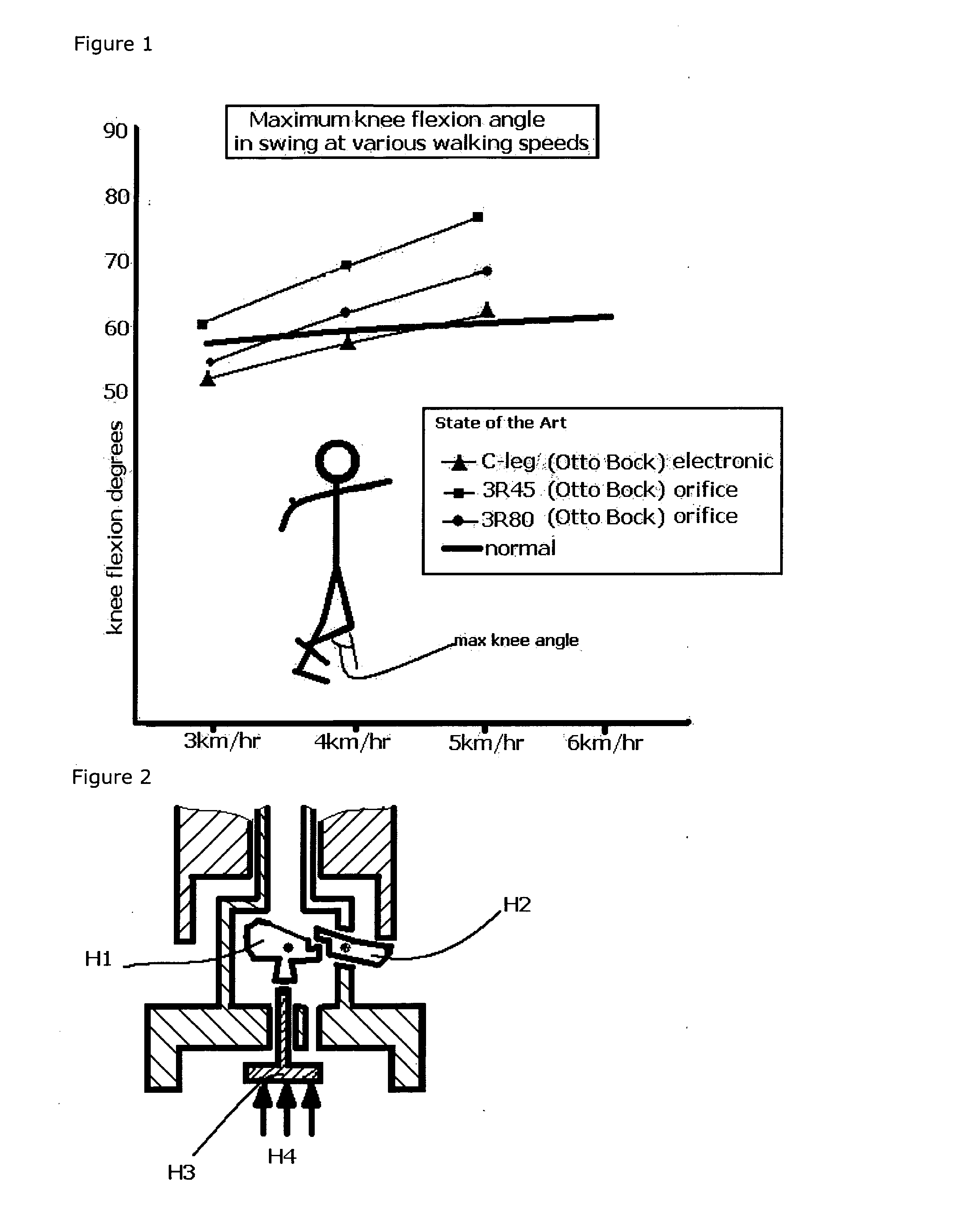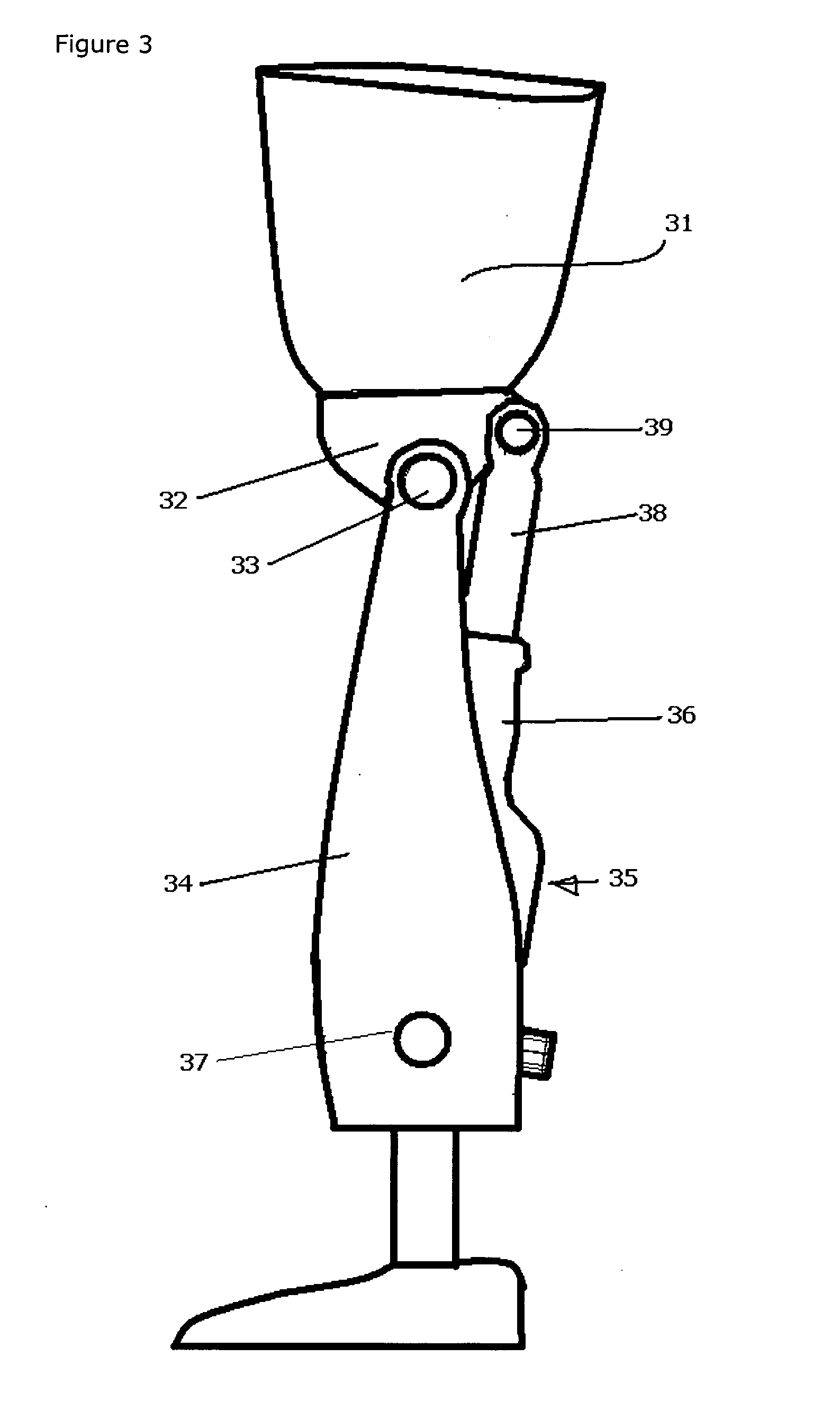Hydraulic prosthetic joint
a prosthetic joint and hydraulic technology, applied in the field of artificial legs, can solve the problems of unwelcome stares of amputees, knees becoming automatically locked, and resistance often so grea
- Summary
- Abstract
- Description
- Claims
- Application Information
AI Technical Summary
Benefits of technology
Problems solved by technology
Method used
Image
Examples
Embodiment Construction
[0043]There will now be described, by way of example only, the best mode contemplated by the inventor for carrying out the present invention. In the following description, numerous specific details are set out in order to provide a complete understanding to the present invention. It will be apparent to those skilled in the art, that the present invention may be put into practice with variations of the specific.
[0044]FIG. 3 shows a simple artificial leg arrangement 30, wherein an upper leg member 31 terminates with a stump element 32, which is pivotally connected to a lower leg member 34 by means of joint 33. A main body 36 of a hydraulic damper 35, having a main body 36, is connected with the lower leg 34 at coupling point 38, which coupling point 38 allows relative movement therebetween. A member 37 of the hydraulic damper 35 is connected to the stump element 32 at coupling point 39 and is similarly arranged for movement, in this case, relative to the stump element 32. Whilst the f...
PUM
 Login to View More
Login to View More Abstract
Description
Claims
Application Information
 Login to View More
Login to View More - R&D
- Intellectual Property
- Life Sciences
- Materials
- Tech Scout
- Unparalleled Data Quality
- Higher Quality Content
- 60% Fewer Hallucinations
Browse by: Latest US Patents, China's latest patents, Technical Efficacy Thesaurus, Application Domain, Technology Topic, Popular Technical Reports.
© 2025 PatSnap. All rights reserved.Legal|Privacy policy|Modern Slavery Act Transparency Statement|Sitemap|About US| Contact US: help@patsnap.com



